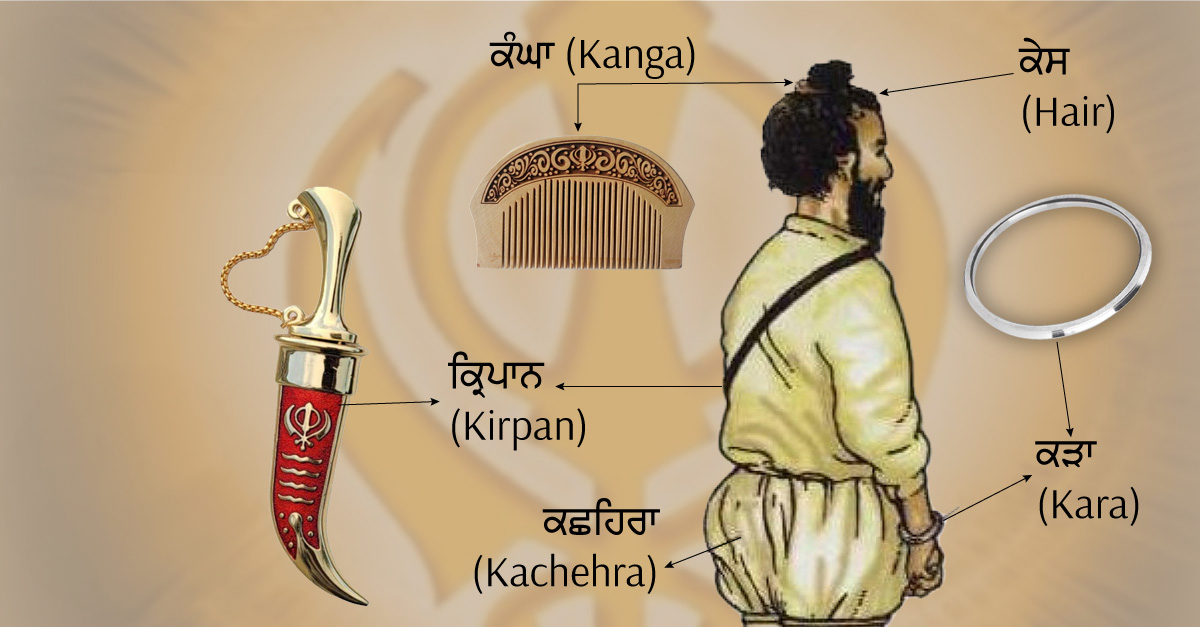Kesh (Uncut Hair) or Keski (Small Turban)
Kesh, or uncut hair, is one of the most recognizable symbols of Sikhism. It represents a Sikh’s acceptance of God’s will and the belief in maintaining the natural form given by the Creator. Sikhs, both men and women, are encouraged to let their hair grow naturally as a mark of respect and spirituality.
Many Sikhs also wear a Keski (a small turban or cloth) to protect and keep their hair neat. The turban itself has become a powerful symbol of Sikh identity, dignity, and self-respect. For Sikhs, Kesh and Keski reflect commitment, discipline, and dedication to their faith.
Kanga (Wooden Comb) – A Mark of Cleanliness and Order
The Kanga is a small wooden comb that Sikhs use to maintain their hair. It signifies cleanliness, order, and self-discipline
Kara (Iron Bracelet) – A Bond with the Divine
The Kara is an iron or steel bracelet worn on the wrist, symbolizing an unbreakable connection with God. It serves as a constant reminder to engage in righteous actions and resist evil. The circular shape represents eternity, with no beginning or end, signifying the infinite nature of the divine. Traditionally made of iron, the Kara also represents strength, humility, and discipline in a Sikh’s daily life.
Kachera (Cotton Undergarment) – A Symbol of Modesty and Self-Control
The Kachera is a simple, white cotton undergarment, resembling boxer shorts, worn by Sikhs as a symbol of modesty and self-restraint. It was introduced to promote high moral character and control over desires. During Guru Gobind Singh Ji’s time, it also served a practical purpose, ensuring that Sikh warriors were always battle-ready. Even today, the Kachera reminds Sikhs to lead a disciplined and pure life.
Kirpan (Sword) – A Symbol of Courage and Justice
The 5Ks—Kirpan, Kara, Kesh/Keski, Kachera, and Kanga—are five articles of faith that hold deep spiritual and practical significance in Sikhism. They were introduced by Guru Gobind Singh Ji, the tenth Sikh Guru, when he established the Khalsa in 1699. These symbols are not merely external markers; they represent the values, discipline, and commitment of a Sikh to their faith. Let’s explore the meaning and importance of each of the 5Ks.


Comments are closed